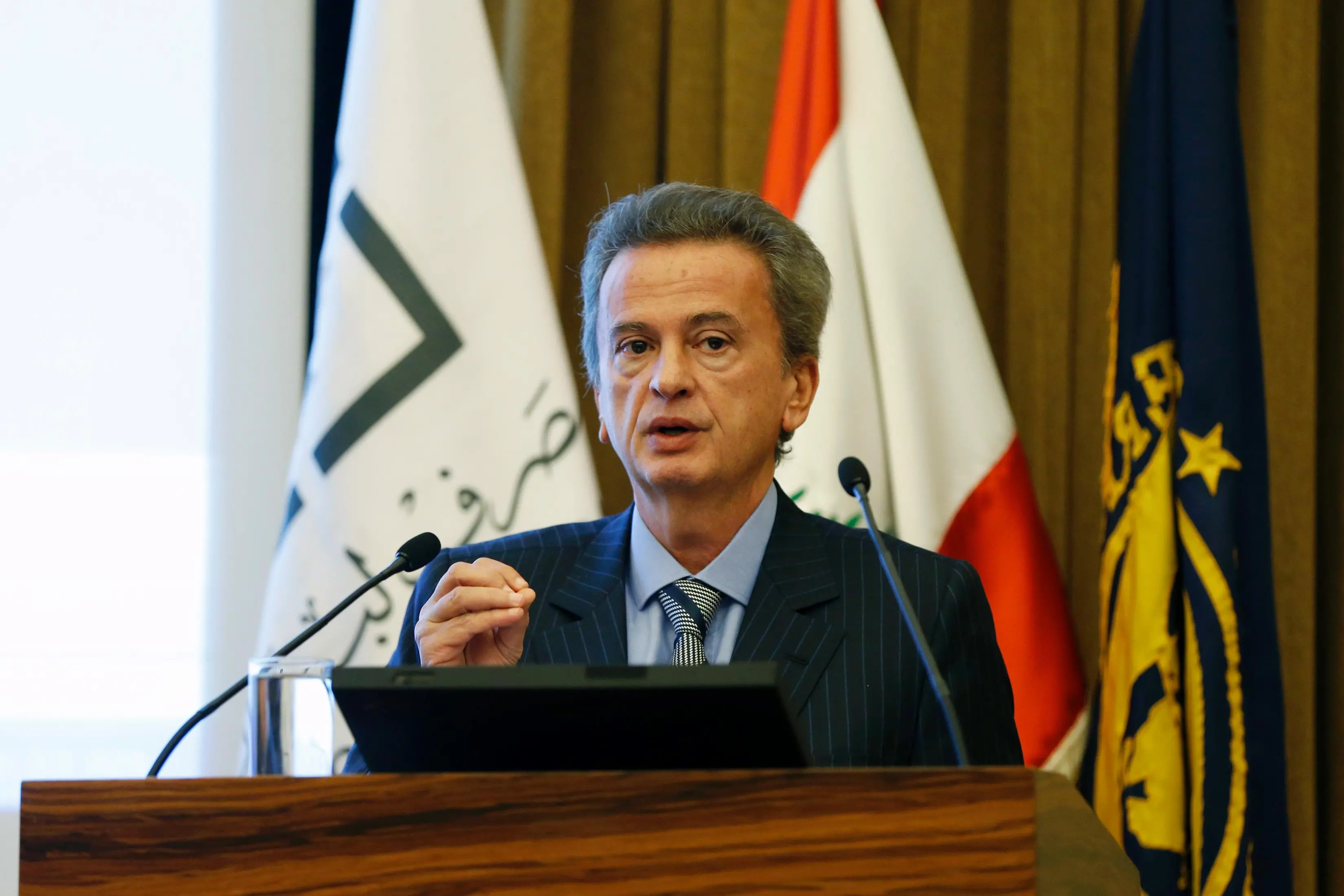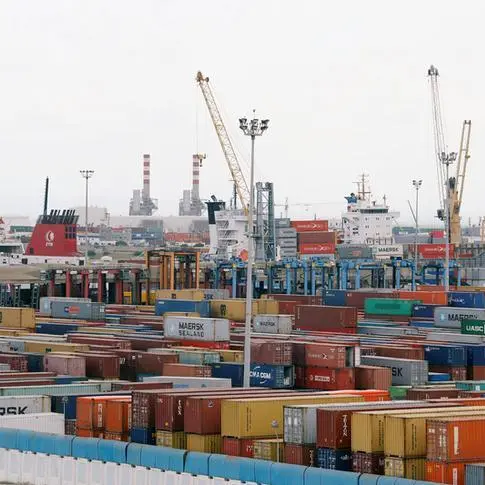PHOTO
Lebanon's Central Bank Governor Riad Salameh speaks during an economic forum organized by the Central Bank of Lebanon in collaboration with the International Monetary Fund at the Lebanese Central Bank in Beirut June 18, 2014.
BEIRUT/LONDON - Lebanon's central bank governor inflated the institution's assets by over $6 billion in 2018, its audited annual accounts show, underlining the extent of financial engineering used to help prop up the country's economy.
The financial statements for 2018, a copy of which was seen by Reuters, were signed off with qualifications by EY and Deloitte just last month, and have not been made public.
The accounts show how the central bank managed to balance its books while helping to fund an ever-widening government deficit, including recording a 10.27 trillion Lebanese pound ($6.82 billion) asset described as "seigniorage on financial stability".
The accounts said governor Riad Salameh "determines on a yearly basis the amount that should be allocated from the liability balance from seigniorage to deferred interest expense and other finance costs".
Most central banks record seigniorage, usually defined as a profit made from printing money, as an income stream. But Lebanon's central bank was recording expected seigniorage profits as an asset, according to the annual financial statement for 2018, prepared by the central bank and reviewed by EY and Deloitte.
"The item that deals with seigniorage is total fiction," said Steve H. Hanke, Professor of Applied Economics at the Johns Hopkins University.
A central banking expert who has been following the financial crisis in Lebanon for years, Hanke said Lebanon's central bank had used the category of "other assets" to disguise losses on loans to the government.
Salameh did not respond to detailed questions that were emailed to his office.
Deloitte declined to comment. EY did not respond to a request for comment.
The outlines of the central bank's accounting approach were first reported by the Financial Times.
Explaining why they were signing off on the accounts with qualifications, EY and Deloitte listed a number of factors including being unable to confirm all deposit balances and being unable to conduct an in-person inventory of the bank's gold reserves.
In addition, Deloitte and EY said the central bank used an accounting and financial reporting framework adopted by its own council, rather than International Financial Reporting Standards (IFRS). They said their own audit was conducted in accordance with International Standards on Auditing.
The central bank's unusual approach is permissible because there is no global standard for central bank accounting.
FINANCIAL ENGINEERING
During Salameh's 27 years in charge, the governor has used what he has described as "financial engineering" to keep Lebanon's public finances afloat and defend the pound's peg to the U.S. dollar, chiefly by attracting dollars from local banks with high interest rates.
The International Monetary Fund described Lebanon's central bank as "the linchpin of financial stability" in an October 2019 report "but at the cost of intensifying sovereign-bank linkages, which pose risks to banking sector stability, and weighing down its balance sheet while protecting banks' profitability."
Salameh has publicly defended the strategy.
"This engineering, we were forced to do it to buy time for Lebanon, so Lebanon could reform," he said in a televised address in April.
But an economic crisis that has led Lebanon to default on foreign currency debt and seen the currency plunge by 80% has shaken his reputation as a pillar of stability, and Salameh has become a focus of anger for street protesters.
Prime Minister Hassan Diab said on Tuesday that turnaround specialist Alvarez & Marsal would conduct a forensic audit and KPMG and Oliver Wyman a financial audit of the central bank amid a dispute over the scale of the financial losses facing the institution.
The 2018 report shows a number of methods used to inflate assets and minimise liabilities of the central bank, which the government and the IMF, from which Lebanon is seeking support, say is $50 billion in the red.
As well as the unorthodox seigniorage accounting, the central bank also booked supposed profits on lending to the government. The cost of interest paid to banks at rates of between 10% and 20% was meanwhile constantly deferred, building up huge future debts, the statements show.
The statements also refer to the central bank purchasing treasury bills from the banks at a premium carried over unamortized, meaning it should be treated as a liability on the central bank's balance sheet.
"Central banks don't have strict rules like companies do, IFRS or GAAP," said Mike Azar, a senior financial adviser based in Lebanon, referring to international accounting standards.
"But there are good practices they should follow. One is not to show losses and resulting negative capital as fake assets."
GOLD RESERVES
Talks with the IMF that began in May are on hold while the government and central bank argue over the scale of losses in the financial system -- estimated at nearly $69 billion by Alain Bifani, a former member of Lebanon's negotiating team with the IMF -- and how they should be shared.
The most recent central bank data show it had assets of $152 billion last month. According to research by Credit Libanais, that included "other assets" valued at $48.2 billion in mid-June, 61% higher than a year before, a rise the investment bank attributed to seigniorage, open market operations and an appreciation in gold reserves.
The 2018 statements showed the central bank held gold worth 10.61 trillion pounds, although the auditors said they were unable to perform a physical inventory due to a "policy which gives access exclusivity to top executives of the bank".
One accountant, who spoke on condition of anonymity, said that should have raised a red flag given the central bank's asset position and credibility was under scrutiny.
The accountant also said it was not best practice for the central bank's financial statements to be released so late.
A September 2018 paper by the IMF said more than half of central banks publish their statements within nine months of their financial year-ends.
Asked about the 2018 report, Bifani, the second member of Lebanon's IMF team to quit last month, after 20 years as director general at the finance ministry, said auditors had not carried out a physical inspection of the central bank's gold reserves for years.
"As far as I know in the last 30 years they haven't been allowed to do an inventory of the gold reserves," he said.
"The most glaring thing is how they're hiding the losses. He is trying to inflate his assets as much as possible."
(Editing by Catherine Evans and Carmel Crimmins) ((samia.nakhoul@thomsonreuters.com;))





















